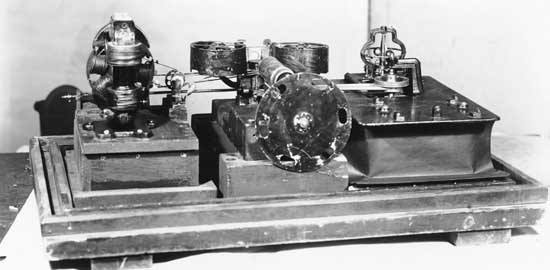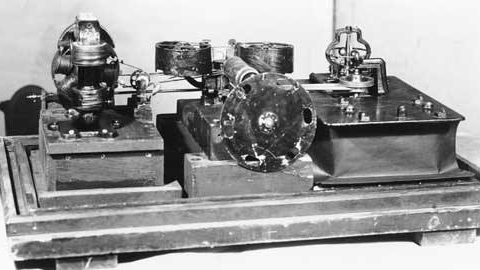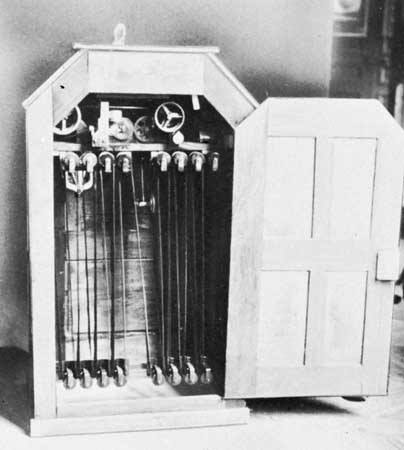

History’s First Marriage Of Recorded Sight And Sound…Circa 1894
History’s First Marriage Of Recorded Sight And Sound…Circa 1894
From the inception of motion pictures, various inventors have attempted to unite sight and sound, but Edison did it first.
The Edison Company is known to have experimented with this as early as the fall of 1894 under the supervision of W. K. L. Dickson with this film known today as the Dickson Experimental Sound Film.
The film linked above shows a man, who may possibly be Dickson, playing violin before a phonograph horn as two men dance. The horn is being used in reverse to its normal application to “condense” the violins sound into the microphone.
By the spring of 1895, Edison was offering Kinetophones, which were film projector boxes with phonographs inside their cabinets. The viewer would look into the peep-holes of the Kinetoscope to watch the motion picture while listening to the accompanying phonograph through two rubber ear tubes connected to the machine.
While the pictures and sound appeared together, they were not what we would consider synchronous. Although the initial novelty of the machine drew attention, the decline of the Kinetoscope business and Dickson’s departure from Edison ended any further work on the Kinetophone for 18 years. This was shot at the Edison Studios in West Orange, New Jersey.
Since Edison’s main interest was his 1877 invention…the phonograph, he was mostly interested in a process the would have is sound device accompanied by pictures, which is why he was not concerned with moving ahead with a projector system. He later did with the Vitascope projector.
Actually, Dickson is the man that shaped the motion picture technique we still use today. In 1887 in Newark, N.J., an Episcopalian minister named Hannibal Goodwin developed the idea of using celluloid as a base for photographic emulsions. The inventor and industrialist George Eastman, who had earlier experimented with sensitized paper rolls for still photography, began manufacturing celluloid roll film in 1889 at his plant in Rochester, N.Y.
This event was crucial to the development of cinematography. The first “moving pictures” were actually series photography with multiple still cameras which could employ glass plates or paper strip film because it recorded events of short duration in a relatively small number of images. Real moving pictures, or cinematography, would inevitably find its subjects in longer, more complicated events, requiring thousands of images…just the kind of flexible but durable recording medium offer by celluloid.
It remained for someone to combine the principles embodied in the apparatuses of series photography with celluloid strip film to arrive at a viable motion picture camera. That was an innovation achieved by William Kennedy Laurie Dickson in the West Orange, N.J., laboratories of the Edison Company.
It was Dickson that split the 70mm Eastman stock into two 35mm strips and added sprocket holes to use in his Kinetoscope camera seen here with the viewing machine. -Bobby Ellerbee

